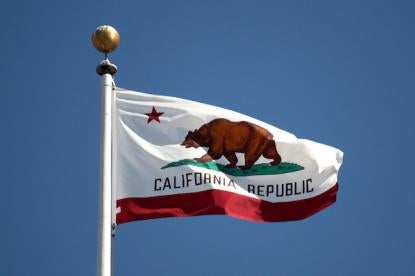California’s Office of Environmental Health Hazard Assessment takes action to address BPA exposures and upcoming warning requirements under Proposition 65.
On March 17, California’s Office of Environmental Health Hazard Assessment (OEHHA) took two actions with respect to the application of Proposition 65[1] to bisphenol A (BPA). The first action was the issuance of a notice of proposed rulemaking to establish a Maximum Allowable Dose Level (MADL) for dermal exposures from solid materials containing BPA. The second was an emergency action to allow for the temporary use of a standard point-of-sale warning for BPA exposures from canned and bottled foods and beverages.
Given the widespread use of BPA in certain plastics and other materials, the proposed rulemaking and emergency action are important developments for a large number of businesses evaluating compliance with Proposition 65 with respect to BPA in products.
Background
BPA has some history when it comes to Proposition 65. BPA was initially listed as a chemical known to cause cancer or reproductive toxicity pursuant to Proposition 65 back in 2013, based on a determination by OEHHA of developmental toxicity. However, BPA was promptly delisted as a result of a court order in ACC v. OEHHA et al. (Sacramento Superior Court). More recently, on May 11, 2015, BPA was added back to the Proposition 65 list, but this time as a female reproductive toxicant. The statute provides a 12-month period from the date of listing before warnings are required. Thus, warnings for exposures to BPA will be required starting on May 11, 2016, unless a person in the course of doing business can show that the exposure is one-thousand times below the “no observable effect level” (NOEL) for BPA.
Proposed MADL
One way for a person in the course of doing business to show that no warning is required is to demonstrate that exposures from a product are less than the MADL established by OEHHA and listed as a level posing no significant risk. While a business can seek to demonstrate that a higher level than the MADL generated by OEHHA is also below the one-one thousandth of a NOEL, the published MADL essentially provides a “safe harbor” level and avoids the need for additional risk analysis and scientific review of the level.
Based on OEHHA’s review of the scientific studies, it has proposed a MADL of 3 microgams/day (dermal exposure from solid materials) for BPA.
Emergency Action Allowing Uniform Point-of-Sale Warnings for Canned and Bottled Food and Beverages
OEHHA attempted to develop a MADL for oral exposure (as opposed to the dermal exposures discussed above) that could have precluded the need for an emergency action on the warnings. However, OEHHA was unable to work through the technical, practical, and timing issues associated with adopting an oral exposure MADL. As a result, OEHHA found itself trying to address concerns regarding consumer confusion, removal of canned and bottled products that would impact the availability of nutritional foods, and potential litigation.
OEHHA’s proposed solution, as presented in the emergency action, is to amend the regulations to provide for the temporary use of a standard point-of-sale warning as a compliance option. The justification for the approach provided by OEHHA is that the proposed amendment would
- avoid consumer confusion by promoting consistent warnings about BPA exposure from canned and bottled foods and beverages prior to exposure, as required by Health and Safety Code section 25249.6;
- avoid a potential misperception on the part of the public that the canned and bottled food supply poses an imminent health threat;
- avoid the reaction of retailers that may pull existing inventories of canned and bottled foods off store shelves in an effort to avoid liability;
- avoid harm to the general welfare of low income communities and populations who live in “food deserts” by potentially significantly limiting availability of necessary food items; and
- provide the public with supplemental information via a link to the OEHHA website with fact sheets and links to materials from other authoritative organizations concerning exposures to BPA from canned and bottled foods and beverages in order to help consumers make informed decisions.
The compliance option contemplates signs no smaller than 5 x 5 inches with the following warning language:
WARNING: Many cans containing foods and beverages sold here have epoxy linings used to avoid microbial contamination and extend shelf life. Lids on jars and caps on bottles may also have epoxy linings. Some of these linings can leach small amounts of bisphenol A (BPA) into the food or beverage. BPA is a chemical known to the State of California to cause harm to the female reproductive system. For more information go to: www.P65Warnings.ca.gov/BPA.
These actions by OEHHA will have a significant impact on any evaluation of compliance with Proposition 65 for exposures to BPA. Comments on the proposed MADL are due to OEHHA by May 16, 2016. Note that this means that the proposed MADL will not be finalized until after the May 11, 2016 trigger date for warnings.
[1] California’s Proposition 65 (The Safe Drinking Water and Toxic Enforcement Act of 1986), passed by direct voter initiative in 1986, provides for the listing of chemicals known to the State to cause cancer and/or reproductive harm, and prohibits the discharge of listed chemicals into sources of drinking water, as well as requires warnings for exposures to a significant amount of listed chemicals.



 i
i

